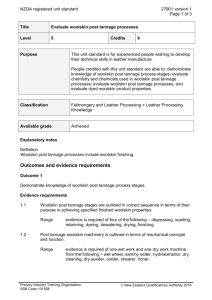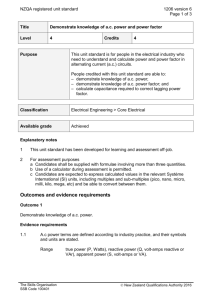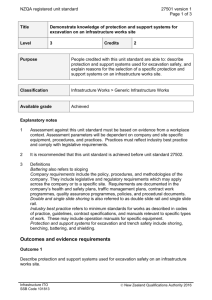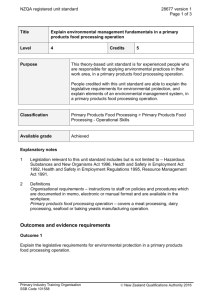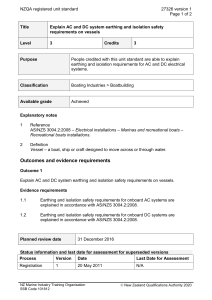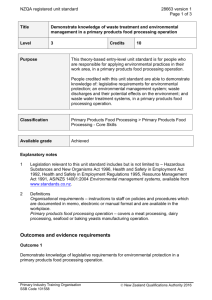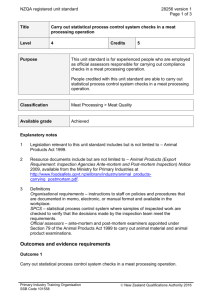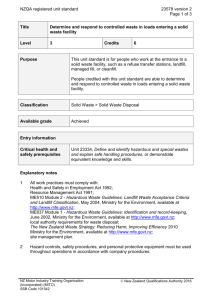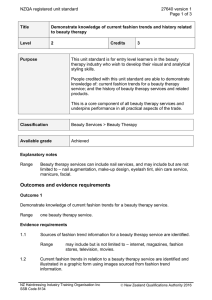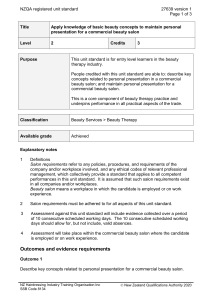27645 Demonstrate knowledge of the structure and functions of the
advertisement
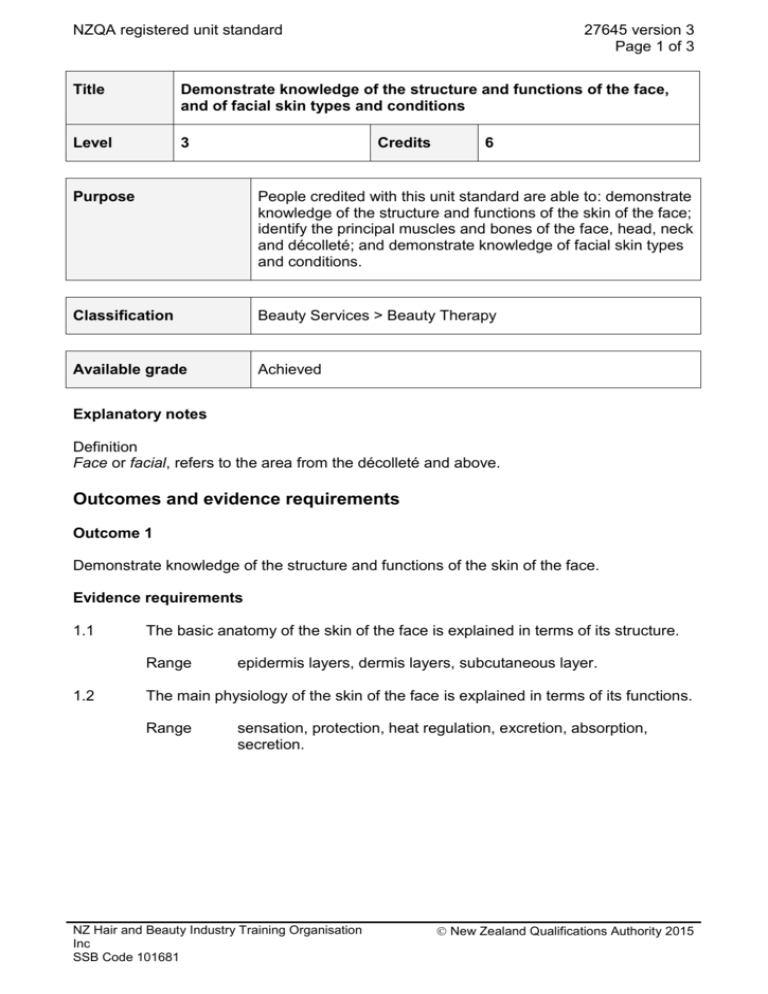
NZQA registered unit standard 27645 version 3 Page 1 of 3 Title Demonstrate knowledge of the structure and functions of the face, and of facial skin types and conditions Level 3 Credits 6 Purpose People credited with this unit standard are able to: demonstrate knowledge of the structure and functions of the skin of the face; identify the principal muscles and bones of the face, head, neck and décolleté; and demonstrate knowledge of facial skin types and conditions. Classification Beauty Services > Beauty Therapy Available grade Achieved Explanatory notes Definition Face or facial, refers to the area from the décolleté and above. Outcomes and evidence requirements Outcome 1 Demonstrate knowledge of the structure and functions of the skin of the face. Evidence requirements 1.1 The basic anatomy of the skin of the face is explained in terms of its structure. Range 1.2 epidermis layers, dermis layers, subcutaneous layer. The main physiology of the skin of the face is explained in terms of its functions. Range sensation, protection, heat regulation, excretion, absorption, secretion. NZ Hair and Beauty Industry Training Organisation Inc SSB Code 101681 New Zealand Qualifications Authority 2015 NZQA registered unit standard 27645 version 3 Page 2 of 3 Outcome 2 Identify the principal muscles and bones of the face, head, neck and décolleté. Evidence requirements 2.1 The principal muscles of the face, head, neck and décolleté are identified in terms of their position. Range 2.2 orbicularis oculi, orbicularis oris, masseter, buccinator, sternocleido mastoid, trapezius, platysma, deltoid, levator anguli oris, levator labii superioris, depressor anguli oris, depressor labii inferioris, mentalis, zygomaticus, temporalis, nasalis, frontalis, occipitalis, pterygoids, procerus, corrugator, pectoralis major and minor. Bones in the face, head, neck and décolleté are identified in terms of their position. Range parietal, frontal, ethmoid, sphenoid, occipital, temporal, nasal, zygomatic, maxillae, lacrimal, conchae, palatine, mandible, vomer, clavicle, scapula, hyoid. Outcome 3 Demonstrate knowledge of facial skin types and conditions. Evidence requirements 3.1 Facial skin types are described in terms of their features. Range 3.2 Skin conditions are explained in terms of their features and causes. Range 3.3 facial skin types include but are not limited to – oily, dry, combination, normal, sensitive. non-contagious skin conditions include but are not limited to – comedones, acne vulgaris, acne rosacea, sun damage, pigmentation, dehydrated, lipid dry, ageing, irritated; contagious skin conditions include but are not limited to – cold sores, severe eczema, infected acne, impetigo. The process for referring a client before commencing any beauty services is explained in terms of situations when facial skin type or condition is a potential contraindication or there is a potential for allergies. Range beauty therapist, pharmacist, doctor, senior staff member. NZ Hair and Beauty Industry Training Organisation Inc SSB Code 101681 New Zealand Qualifications Authority 2015 NZQA registered unit standard Planned review date 27645 version 3 Page 3 of 3 31 December 2020 Status information and last date for assessment for superseded versions Process Version Date Last Date for Assessment Registration 1 15 March 2012 31 December 2018 Review 2 21 May 2015 N/A Revision 3 10 December 2015 N/A Consent and Moderation Requirements (CMR) reference 0035 This CMR can be accessed at http://www.nzqa.govt.nz/framework/search/index.do. Please note Providers must be granted consent to assess against standards (accredited) by NZQA, before they can report credits from assessment against unit standards or deliver courses of study leading to that assessment. Industry Training Organisations must be granted consent to assess against standards by NZQA before they can register credits from assessment against unit standards. Providers and Industry Training Organisations, which have been granted consent and which are assessing against unit standards must engage with the moderation system that applies to those standards. Requirements for consent to assess and an outline of the moderation system that applies to this standard are outlined in the Consent and Moderation Requirements (CMR). The CMR also includes useful information about special requirements for organisations wishing to develop education and training programmes, such as minimum qualifications for tutors and assessors, and special resource requirements. Comments on this unit standard Please contact the NZ Hair and Beauty Industry Training Organisation Inc enquiries@hito.org.nz if you wish to suggest changes to the content of this unit standard. NZ Hair and Beauty Industry Training Organisation Inc SSB Code 101681 New Zealand Qualifications Authority 2015
